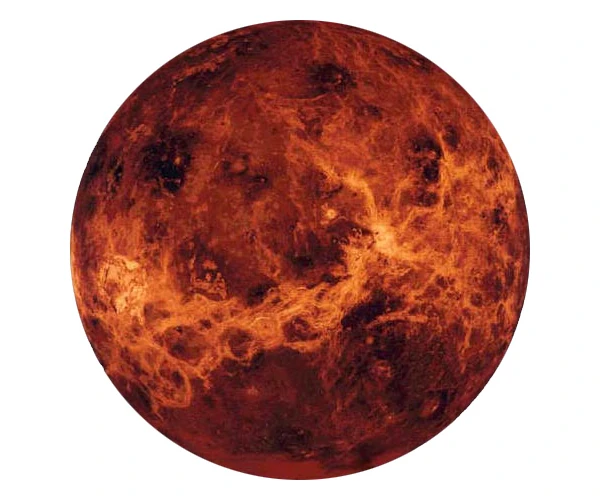
Image: The planet Venus with a diameter of 12,100 km is a little smaller than the Earth which has a diameter of 12,756 km.
• Venera 1 (Soviet Union, 1961): Its objective was to make scientific measurements of the interplanetary environment and to fly over Venus. However, she failed to reach her destination
• Mariner 2 (USA, 1962): This was NASA's first successful interplanetary mission and its main objective was to collect scientific data on the atmosphere and surface temperature of Venus.
• Venera 2 (Soviet Union, 1965): The main objective of this mission was to study interplanetary radiation, magnetic fields and particle fluxes en route to Venus. However, she failed before reaching her destination.
• Venera 3 (Soviet Union, 1965): This was the first probe to reach the surface of Venus, but it failed during landing.
• Venera 4 (Soviet Union, 1967): This mission made it possible to carry out the first direct measurements of the atmosphere of Venus
• Mariner 5 (United States, 1967): This mission aimed to study the atmosphere, surface temperature and magnetic field of Venus.
• Venera 5 (Soviet Union, 1969): The main objective of this mission was to study the atmosphere of Venus.
• Venera 6 (Soviet Union, 1969): This mission had the same objective as Venera 5, but with different instruments.
• Venera 7 (Soviet Union, 1970): This mission succeeded in landing on the surface of Venus and transmitting the first scientific data from the surface of the planet.
• Cosmos 482 (Soviet Union, 1972): This mission was intended to study Venus and Mars, but failed shortly after launch.
• Venera 9 (Soviet Union, 1975): This mission aimed to study the surface of Venus and the atmospheric environment.
• Venera 10 (Soviet Union, 1975): This mission had the same objective as Venera 9, but with different instruments.
• Pioneer Venus Orbiter (USA, 1978): The main purpose of this mission was to map the surface of Venus and collect data on the planet's atmosphere.
• Pioneer Venus Multiprobe (USA, 1978): This mission sent four probes to Venus to study the atmosphere and surface of the planet.
• Venera 11 (Soviet Union, 1978): mission to study the composition of the atmosphere of Venus and the surface of the planet.
• Venera 12 (Soviet Union, 1978): mission to measure the composition of the atmosphere of Venus and study the surface of the planet.
• Venera 13 (Soviet Union, 1981): mission to study the composition of the atmosphere of Venus and the surface of the planet.
• Vega 1 (Soviet Union, 1985) - Objective: to study the atmosphere, surface and composition of Venus.
• Vega 2 (Soviet Union, 1985) - Objective: to study the atmosphere, surface and composition of Venus.
• Magellan (United States, 1989) - Objective: to map the surface of Venus and study its geology.
• Venus Express (European Space Agency, 2005) - Objective: to study the atmosphere, surface and composition of Venus.
• Akatsuki (Japan, 2010) - Objective: to study the atmosphere of Venus and its climate.